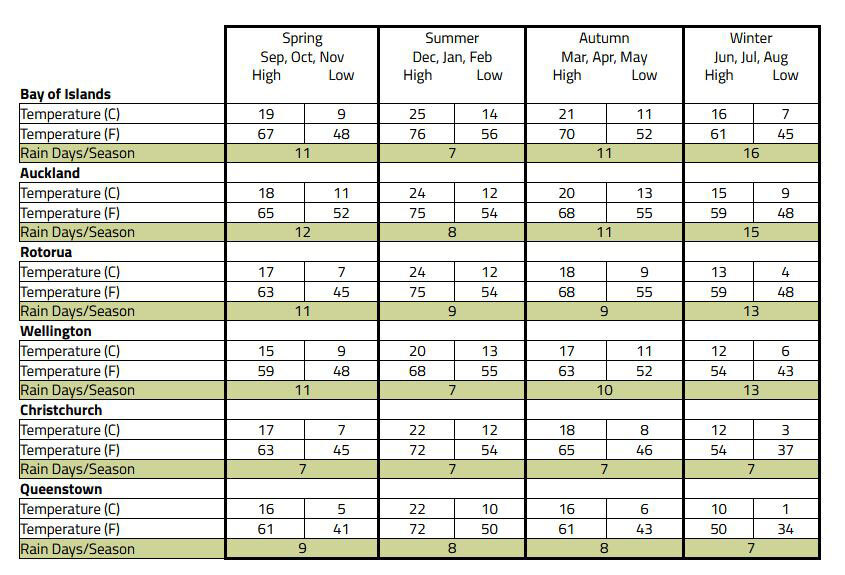What sort of weather can I expect on my tour?
You can check long range forecasts for weather on the New Zealand Metservice Website.
New Zealand experiences four distinctive seasons, officially these are:
Summer: December, January and February
Autumn: March, April and May
Winter: June, July and August
Spring: September, October and November
However, the weather can be variable and does not always follow traditional seasonal expectations – summer, for instance, can be both very hot and very cold.
Seasonal Temperatures and Conditions?
Summer: Expect an average high of 25 C (76 F) in the north to around 22 C (72 F) in the south.
Average lows (evening time) are 13 C (55 F) in the north to 12 C (54 F) in the south.
Autumn: Expect an average high of 20 C (68 F) in the north to around 17 C (63 F) in the south.
Average lows (evening time) are 11 C (52 F) in the north to 7 C (45 F) in the south.
Winter: Expect an average high of 15 C (59 F) in the north to around 10 C (50 F) in the south.
Average lows (evening time) are 6 C (43 F) in the north to 2 C (35 F) in the south.
Spring: Expect an average high of 18 C (65 F) in the north to around 16 C (61 F) in the south.
Average lows (evening time) are 9 C (48 F) in the north to 7 C (45 F) in the south.
Seasonal Highs & Lows:

Rainfall: Rainfall is generally consistent throughout the year between 7 and 11 days per month, but some regions (such as the South Island's West Coast and Fiordland) get drier during the winter months.
Snow: In the North Island snow mainly affects the high Central Plateau around Tongariro National Park where ski fields Whakapapa and Turoa are located. Other peaks such as Mt Egmont / Taranaki and mountain ranges also get snow but not in the way that will affect travel through surrounding regions. You are unlikely to experience snow anywhere but the Central Plateau in the North. In the South Island almost anywhere can experience snow. The Southern Alps – stretching the length of the island – is entirely covered during winter meaning you’re never too far from a dusting of white. Canterbury, Otago and Southland generally get the most snow and this is why most of the ski resorts are based here.
Driving conditions: New Zealand roads are very well maintained and well signposted. Local road maintenance crews are very used to the wintry conditions that some regions can experience and respond quickly to keep roads clear and safe.
Browse by category below
Or get in touch with the team if you have a specific question.
